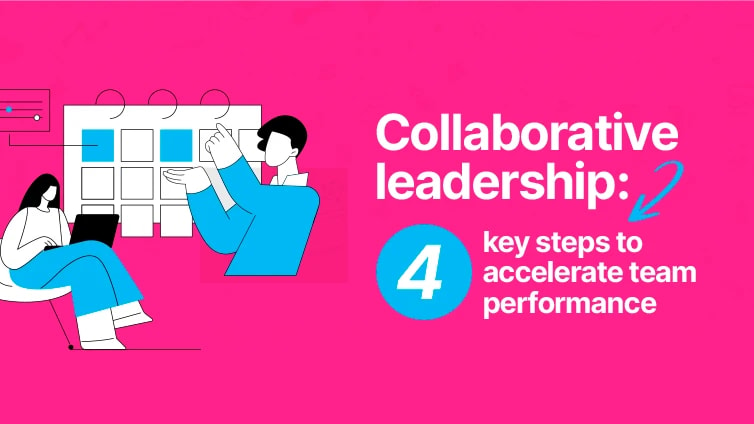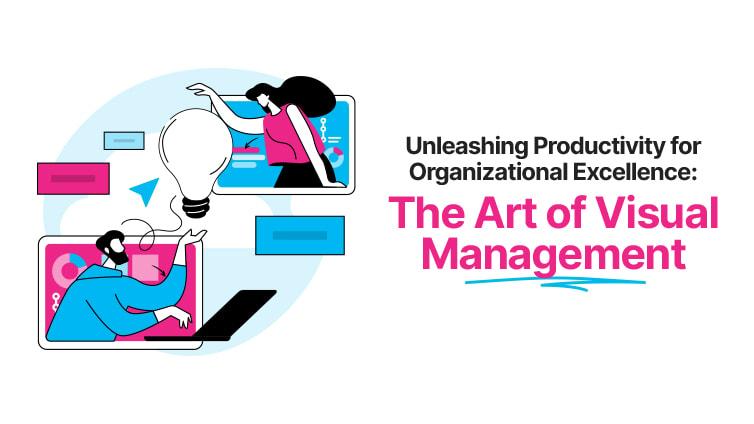Middle managers: Achieving efficiency through empowering collaboration
Executive summary:
In a context where only 21% of employees are engaged in their work, according to Gallup (2024), the role of middle management is more important than ever.
Yet, middle managers often remain in the shadows, facing an invisible workload and multiple tasks without recognition.
Their pivotal position between senior management and teams presents them with unique challenges. These include translating strategic vision into concrete actions, uniting employees, and driving collective momentum.
To address these challenges, our CARE approach offers a simple and operational framework based on four pillars:
- Collaborate: Break down silos, encourage cross-functional collaboration, and establish appropriate team rituals to foster collective intelligence. Middle managers must create an environment where everyone can express themselves, share their ideas, and actively contribute to the common goal.
- Align: Bridge the gap between management's strategic vision and the reality on the ground. This involves translating ambitions into concrete objectives tailored to the specific needs of each team and clearly communicating the “what” and “how” of change.
- Foster Responsibility: Encourage autonomy and initiative by clarifying roles, delegating appropriate decisions, and supporting the development of each individual's skills.
- Engage: Unite the team around a common project by encouraging active participation, creating a climate of trust, and simplifying interactions to strengthen long-term engagement.

This guide presents our 4-step methodology to help you implement collaborative leadership focused on high performance and efficiency.

In everyday business life, middle management plays an often underestimated but essential role.
In 2024, a Gallup study showed that only 21% of employees worldwide said they were truly engaged in their work. Middle managers are among the main factors that have the power to influence this level of engagement over time, through exchanges and projects.
They translate the vision of top management into concrete actions, all while paying close attention to the needs of their teams. However, this mission presents many challenges: they must balance the sometimes conflicting expectations of top management and employees while maintaining an effective collective dynamic.
In a context that emphasizes empowerment and meaningful collaboration, how can middle managers strike the right balance? How can they create a climate of trust that allows everyone to get fully involved and give their best?
In this article, we will present a concrete methodology to help you transform your work and collaboration practices into a real driver of collective performance. For simplicity's sake, we will call it the CARE method: Collaborate, Align, foster Responsibility, and Engage.
Why is middle management often underestimated in companies?
Middle managers are at the heart of how organizations function, yet they often work behind the scenes. Although their role is strategic, it is sometimes perceived as purely operational: they are neither full decision-makers nor full executors.
This intermediate position, at the crossroads between top management and teams, exposes them to many challenges... but also to a form of invisibility.
There are several reasons for this:
- A lack of recognition: Successes are often attributed to the vision of top management or the performance of teams, leaving little room for recognition of the work done by middle management in terms of leadership, coordination, and strategic translation.
- An invisible workload: According to Gartner, managers (and therefore a large proportion of middle managers) take on an average of 51% more responsibilities than they can actually handle, often without adequate resources or support.
- Complex and multiple tasks: They have to juggle communicating strategy, managing resistance to change, developing talent, and solving everyday problems.
- Heavy bureaucracy and processes: Nearly one in two managers cite the complexity of processes as the main obstacle to their effectiveness (McKinsey).
Yet middle managers are the ones who bridge the gap between the company's vision and its operational reality every day. They bring teams together and drive collective momentum. Restoring middle management to its rightful place therefore means investing in the sustainable success of the organization.
With this in mind, let’s introduce the CARE method (Collaborate, Align, foster Responsibility, Engage). These guidelines provide middle managers with concrete tools tailored to their needs, transforming their role into a catalyst for efficiency and performance.
The CARE method to increase the effectiveness of collaboration through middle management
1. Collaborate: Create an environment conducive to exchange and collective intelligence
Break down silos and encourage cross-functional collaboration
In increasingly complex projects that require a variety of expertise, cross-functional collaboration has become essential. Middle managers have a key role to play in breaking down the silos that hinder the flow of information and limit innovation.
In concrete terms, this means encouraging exchanges between different departments, professions, and hierarchical levels. By promoting this cross-functional approach, they create an environment where everyone can share their ideas, draw on each other's skills, and find solutions together more quickly.
Several levers can be activated to encourage cross-functional collaboration:
- Organize inter-team workshops to exchange perspectives and generate new ideas.
- Set up working groups or joint projects bringing together employees from different departments.
- Encourage mentoring or expertise sharing among colleagues so that everyone can learn from each other.
- Celebrate collective successes and encourage peer recognition to strengthen team spirit beyond the usual boundaries.
Establish team rituals and collaborative tools
To encourage effective collective collaboration, also consider implementing appropriate team rituals:
- Regular meetings: Weekly, monthly, etc.
- Collaborative workshops: Brainstorming, project kick-offs, mind mapping, etc.
- Feedback sessions: Retrospectives, one-on-ones, etc.
- Informal sharing moments: Icebreakers, virtual coffee breaks, etc.
These structured moments allow everyone to express themselves, share their progress, and overcome any obstacles.
Tools such as Klaxoon’s collaboration platform help you establish these team rituals, whatever their nature, and turn them into drivers of efficiency, whether on-site or remote, synchronous or asynchronous. Our library of ready-to-use templates is at your disposal to create your next team ritual in just a few clicks!
Frame the complexity of interactions
The rapid growth of projects and contacts can quickly complicate your interactions.
To avoid overload and disorganization, it is recommended to adopt visual management practices (dashboards, online whiteboards, roadmaps, etc.), use templates tailored to your meetings and reports, and clarify the roles and responsibilities of each team member.
This structured organization improves efficiency, reduces misunderstandings, and strengthens team cohesion.
2. Align: Link the strategic vision to operational action
Translate management's vision into concrete action plans
Middle management plays an essential intermediary role between top management and operational teams. While top management defines the overall vision and broad guidelines, it is up to middle managers to translate them into concrete and understandable actions for their teams.
This involves decoding strategic ambitions, identifying priorities, and translating them into clear objectives that are tailored to each employee's daily work.
Once again, visual management can help you achieve this. With clear monitoring tools that can be accessed from anywhere, you can make it easier to understand the issues at stake, distribute tasks, and monitor everyone's progress, while making the overall strategy accessible to all.
Adapt objectives to the realities on the ground
Effective alignment is not just about communicating objectives. It is also about adapting them to the specific characteristics and constraints of each team.
Middle managers must take into account the available resources and skills, as well as any potential obstacles or resistance. This requires active listening, reporting back on the needs on the ground, and adjusting priorities according to operational realities.
To do this, tools such as one-to-one meetings, performance reviews, and goal-setting workshops can be used to involve employees in defining priorities and strengthen their commitment.
Communicate the “what” and “how” of change
Alignment requires clear and regular communication. It is not enough to announce a change: you need to explain the “what” (what is changing), but also the “how” (how it will happen, what the concrete impacts will be, how everyone can contribute).
This transparency is essential to overcome resistance, reassure teams, and gain their buy-in.
Formats such as information meetings, question-and-answer sessions, or shared visual aids (presentations, infographics, interactive Boards, etc.) are all ways to bring the strategy to life and make it understandable for everyone.
3. Foster Responsibility: Encourage autonomy and initiative
Identify and delegate different types of decisions
In order to effectively empower your teams, it is important to understand the different types of decisions that need to be made within the company:
- Certain strategic decisions with high stakes are the responsibility of top management.
- Others, which are more cross-functional or operational, can and should be entrusted to middle managers or directly to the teams concerned.
- Finally, day-to-day or ad hoc decisions can be delegated to streamline processes and increase agility.
By delegating appropriately, you lighten your own workload while giving your employees the opportunity to become more involved in the life of the team.
Tools such as decision-making matrices, checklists, or task tracking templates (available on Klaxoon, for example) can help you clarify who decides what and ensure that action is taken.
Clarify roles and reward initiative
Fostering responsibility also requires a clear definition of each person's role.
When each team member knows exactly what is expected of them, they feel more confident to experiment, take initiative, and propose solutions. Don't hesitate to formalize these roles during team meetings, using visual aids or recognized methods such as the RACI matrix.
Also value individual and collective initiatives: praise relevant decisions, encourage the sharing of ideas, and show that mistakes are part of the learning process. This recognition fuels your employees' motivation and engagement.
Support skills development
Empowering your employees and encouraging them to take on more responsibility also means investing in their professional development.
Offer appropriate training, encourage mentoring or expertise sharing, and provide opportunities to develop skills on new projects. Skills assessment tools, one-on-ones, and personalized development plans are all levers that can be used to support each person's progress.
4. Engage: Unite the team around a common vision
Encourage active and inclusive participation
Team engagement depends above all on each individual's ability to express themselves and actively contribute to the life of the group.
As a middle manager, make sure you give everyone a voice, whether they prefer to contribute orally or in writing. To do this, use collaborative tools that allow everyone to share their ideas, vote, or respond, with a unified experience in both face-to-face and hybrid modes:
- Quizzes
- Surveys and polls
- Adapted ideation spaces, etc.
Create a climate of trust and recognition
To build lasting engagement, it is essential to build a climate of trust.
To do this, don't hesitate to recognize your team's efforts, praise their progress, and regularly thank them for their involvement. These tokens of trust can take many forms: a simple word during a meeting, a personalized message, or highlighting a collective achievement.
Make your interactions simple and intuitive
Engagement is strengthened when interactions within the team are fluent and pleasant.
As a middle manager, simplify communication processes: favor intuitive tools, centralize important information, and limit the number of channels. Also, make sure that your meetings are well structured, with a clear agenda and specific objectives, so that everyone knows what to expect and can contribute effectively.
By focusing on active participation, trust, and simple communication, you create the conditions for strong and lasting collective engagement that will drive the success of your team and your company.
Conclusion
By restoring middle management to its rightful place and applying the CARE method, companies can transform collaboration into a real driver of collective performance.
Collaborate, align, foster responsibility, and engage: these four pillars provide a concrete framework for meeting everyday challenges, strengthening team engagement, and supporting the organization's transformation over the long term.
It is now up to you to make your middle management a pillar of your success!
Unlock your teamwork potential
For free, make your first steps to top-tier work efficiency with the Klaxoon Work Collaboration Platform.

